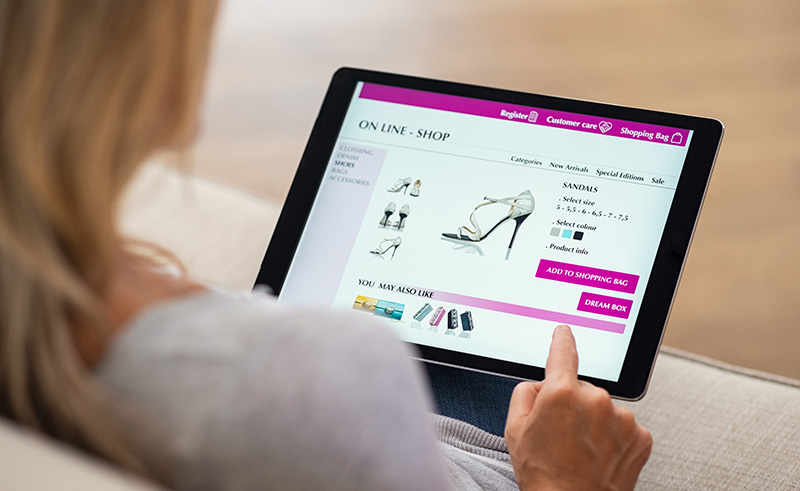This website uses cookies so that we can provide you with the best user experience possible. Cookie information is stored in your browser and performs functions such as recognising you when you return to our website and helping our team to understand which sections of the website you find most interesting and useful.

5 Best Practices to Improve Your Online Shopping Cart Performance
If you’ve got an online shopping cart, then you’ve got a problem—cart abandonment. On average, 69.89% of users abandon full online shopping carts, leaving products and services somewhere in cyberspace, never purchased, never to be delivered…and those sales never added to your revenue stream.
But you can increase conversion and reduce the rate of shopping cart abandonment with some tweaks to your shopping cart presentation.
The bottom line is to KISS (Keep It Simple, Smarty) your shopping cart page design. You need to make it easy for viewers to know what they’re buying and how to actually buy it. And to do that, you must:
#1: Make Cart Contents Easy to See and Understand
Nearly every online shopper has accidentally purchased something, likely something that was difficult to return or get a refund for. To make sure that doesn’t happen again, they will take the opportunity to review their order before finishing the purchase process. If that review is the least bit difficult, they’re likely just to abandon the cart and look somewhere else.
To make the order review process user-friendly, make sure your page clearly displays the most important information about each product or service in the cart, including:
- Size
- Color
- Quantity
- Price
The presence of this order review information isn’t enough. It needs to be laid out in a way that allows shoppers to digest their cart contents at a glance. So, it is imperative to provide a clear, high-quality image of the product on this page. An image of the exact product about to be ordered provides reassurance that the right product has been selected. Information should also be easy to scan, not buried in a chunky paragraph of text.
Also, do not withhold shipping information. Hidden shipping costs are the number one reason American shoppers abandon online carts.
#2: Prominently Position and Color the “Buy” Button
Whether shoppers take the time to carefully review their order or are feeling more impulsive, when they’re ready to buy, they’re ready to buy…so make it easy for them to buy.
Viewers should not have to spend more than a microsecond to find the button that allows them to complete the purchase transaction. To make your “buy” button readily apparent:
- Put the button in multiple locations, like above and below the order summary
- Use a color that makes the button “pop” but still aligns with your overall color scheme (which should be in keeping with your website’s/brand’s color scheme)
- Use sight-readable text like “Checkout” or “Buy Now”
Also, give shoppers who may still have some reservations left an option to get back to their selections without having to go shop all over again—i.e., a “Wish List” or “Save for Later” button. Providing this option has the potential to significantly increase your online conversions because many shopping carts are abandoned because users are really just researching products. In other words, they may be ready to buy later, and they will be more likely to buy from you if you give them a shortcut to what they’ve already shown a preference for.
#3: Let Shoppers Use Their Preferred Payment Options
Some online shoppers may have no qualms about typing in their credit card numbers, expiration dates, etc. Others may prefer to pay through a more-trusted third party or pre-paid account, like PayPal or Apple Pay. Let them choose. More choices could incur more merchant services fees, but the overall payoff may well be worth it.
#4: Make It Easy for Users to Get Answers to Their Last-Minute Questions
Ever heard of the Uncertainty Principle? Humans prefer what they know simply because they are so uncomfortable with the unknown. If your shopping cart leaves users with a feeling of uncertainty, they’re likely to just abandon the sale. Give them an alternative—the ability to voice or text chat with a product expert to answer any nagging questions or concerns.
If you don’t have the infrastructure to support any type of live chat, at least make answers to FAQs and your return/refund policy easy to access from the shopping cart page.
#5: Provide Consumer Reassurance with Trust Seals and Badges
Being up-front about shipping costs, return policies, etc. will go a long way in building consumer confidence. But you can do more to reassure your potential buyers—show them that unbiased third parties trust your brand/your site/your checkout security with seals and badges. The most widely recognized and consumer-preferred include:
- TRUSTe Certified Privacy
- BBB accreditation
- VeriSign
- McAfee Secured
Any cost associated with securing one or more of these badges will easily be recouped in the sales they encourage.
Shopping Cart Optimization Made Easy
You can DIY these best practices to enhance your online shopping cart performance. You can also make shopping cart optimization even easier by relying on SonicSEO.com to do it for you. Our clients enjoy seamless ecommerce functionality—users experience no disruption in the transition from website to shopping cart. And, shopping carts are designed to encourage users to complete their sales journeys. If you want to optimize your users’ ecommerce experience for better conversions, contact us.



